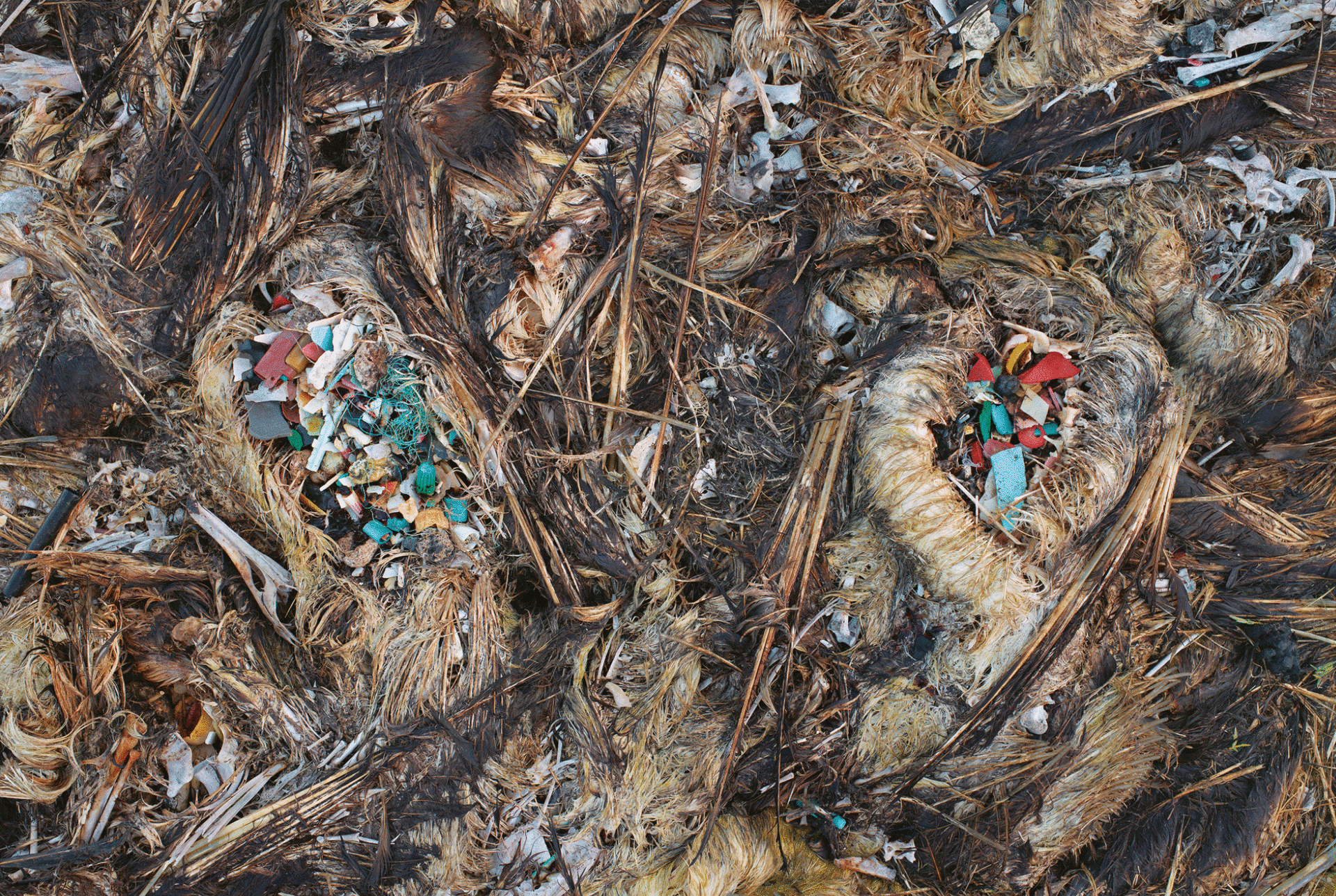Welcome to The Lede

The Lede is a new weekly newsletter giving premium members greater access to Pacific Standard stories, staff, and contributors.
This is the last edition of the The Lede that will be openly available before it is only sent to PS Premium members. This is one part of the exclusive content that you will receive as a PS Premium member—in addition to eight print issues, early access to feature stories, data privacy, and ad-free access to our site. All for just $3.99 a month.
Most importantly, memberships help support stories that make a difference.
Early Access to Online Features
Our newest print feature, “Making a Run for It: Meet Some of the First-Time Female Candidates Running for Office in the Wake of the Trump Presidency,” is available now for premium members only. Part of our March/April print issue, “Making a Run for It” profiles Deedra Abboud, a 46-year-old Phoenix lawyer and community activist; Mai Khanh Tran, a breast cancer survivor and pediatrician in California’s Orange County for 25 years; and Alexandria Ocasio-Cortez, the founder of Brook Avenue Press, an early childhood literacy project.
Next Week: Premium members will receive early access to two additional features.
- Still Rising: Despite the ultimate losses and the many struggles that remain, the historic gathering at Standing Rock gave us a new understanding of the power and determination of indigenous America.
- A More Perfect Union: During a time of great divisiveness, we look to the past for clues to how the nation can stay together through it all.
A Decade of Stories That Matter
Climate change and sustainability, criminal and social justice, education reform, mental-health issues, the future of work and employment—there are a number of broad subjects we’ve returned to again and again. You can see that when you take a moment to step back and survey our work. These are areas that need constant attention, that need to be continuously watched and reported on. And they’re areas we’re still covering to this day, and plan to cover going forward, now on more platforms than ever before—on PSmag.com, through our social accounts and publishing partners, and on The Edit, a brand new podcast that offers a behind-the-scenes look at how our in-depth reporting is done. But to commemorate our special 10th anniversary issue we wan to take a brief look back at 10 big stories—one for each year since our founding in 2008 as Miller-McCune—that ran in our printed pages.
—Nicholas Jackson, Editor-in-Chief
2008: The Environmental Pyramid
A respected geochemical engineer proposes a new way to deal with toxic waste: Make it into shrines that people can work, shop, and even live on.
2009: Weathering, the Storm
African Americans and other minorities get sick and die younger than whites. After decades of research, Arline Geronimus offers a controversial explanation: The long-term stress of living in a white-dominated society “weathers” blacks, making them age faster than their white counterparts.
2010: A Day in the Life of a Sleepy Student
The benefits of letting high school students sleep in.
2011: How to Stop Suicide by Cop
An investigation into the growing movement to train police officers not to kill citizens—even when they seem to be asking for it.
2012: The Death Penalty Is Experiencing Technical Difficulties
Your execution may not resume shortly. How legal wrangling over the chemicals used in lethal injection could shut down capital punishment.
2013: The Social Life of Genes
Day by day, week by week, your genes are in a conversation with your social world. Your neighbors, your friends, your family. They don’t just get under your skin, they get into the control rooms of your cells.
- Winner of the American Association for the Advancement of Science’s Kavli Science Journalism Award for Magazine Feature Writing, recognizing outstanding reporting for a general audience.
2014: Women Aren’t Welcome Here
“Ignore the barrage of violent threats and harassing messages that confront you online every day.” That’s what women are told. But these relentless messages are an assault on women’s careers, their psychological bandwidth, and their freedom to live online. We have been thinking about Internet harassment all wrong.
- Winner of the Sydney Hillman Foundation’s Sidney Award for outstanding journalism that fosters social and economic justice.
2015: Bees, Inc.
A decade ago, people started panicking about the collapse of the honeybee population and the crash of our food supply. But today there are more honeybees than there were then. We have engineered our way to a frenzied and precarious new normal. Inside the pollination-industrial complex.
- Winner of the National Association of Science Writers’ Science in Society Award, which honors outstanding investigative and interpretive reporting about the sciences and their impact for good and ill.
2016: Adrift
An unprecedented number of refugees are boarding unseaworthy vessels for a dangerous crossing of the Mediterranean.
- Winner of the American Society of Magazine Editors’ National Magazine Award for Feature Photography, considered the highest honor in the magazine industry.
2017: Arms Dealers
When eight human heads arrived at a shipping warehouse in Detroit, the feds uncovered some unsavory details about the little-known trade in human remains.

Since We Last Spoke: A Garbage Idea
Updates to stories from the Pacific Standard archive.
A patch of plastic pollution in the Pacific Ocean has grown to rival the size of a not-so-small country. Some activists have even made the case the heap should be recognized as one. Plastic Oceans Foundation, an environmental charity, and LADbible, a news and entertainment group, have petitioned the United Nations to recognize the Great Pacific Garbage Patch as an official nation.
The campaign is the latest in a long list of creative ideas meant to get people caring about the patch. In the September/October 2015 issue of Pacific Standard, Brooke Jarvis documented the efforts of photographer Chris Jordan, who “spent years trying to visually represent the baffling scale on which we produce and scrap the materials of consumer society.”
Jordan’s work took many forms, Jarvis wrote: “a forest made from the cigarette butts thrown out every 15 seconds in the United States; a swirl of hundreds of thousands of cell phones, the discards of a single American day.”
Despite Jordan’s efforts, the amount of microscopic plastic pieces swirling throughout our oceans has continued to grow. The folks at the Plastic Oceans Foundation are hoping that this U.N. petition might further imbue people with a sense of urgency.
PS Picks
PS Picks is a selection of the best things that the magazine’s staff and contributors are reading, watching, or otherwise paying attention to in the worlds of art, politics, and culture.
Family Recipes: I remember the exact moment I learned that my Grandma Camp’s Chocolate Cake recipe was actually Mrs. Wood’s Chocolate Cake recipe. I was about to make the treat by myself for the first time and called my mom for the directions when she dropped that bomb. It felt a little like, if you’ll allow me to be characteristically dramatic, one of the few connections I had to the grandmother I never met had been severed. Perhaps that’s why I was so delighted by Atlas Obscura’s “The Dirty Secret of ‘Secret Family Recipes,'” a collection of readers’ similarly devastating—and a few truly comical—realizations that made me feel both schadenfreude and understood.
It hints at all the ways our memories of food overlap with our memories of the people who made it, and why that’s more important than the ingredients themselves. Maybe we’d all be better off if we just accepted the fact that the Toll House recipe actually makes the best chocolate chip cookies, and that secret family recipes are a myth. But I have nothing but respect for the reader’s mother Atlas Obscura found who alters her top secret (plagiarized) cookie recipe when she shares it, so that the original will always be better—something I’ve long suspected my boyfriend’s mom is doing to me (though, to be fair to Joanne, it could just as easily be my pathological inability to follow directions). And for Mrs. Woods, who, credit where credit’s due, makes a delicious cake.
—Kate Wheeling, Staff Writer

The Renaissance of Lisa Simpson: On February 22nd, Ted Cruz tried to lob bombs at the Democratic Party by declaring it “the party of Lisa Simpson”—whereas Republicans could claim the rest of the famous television family, i.e. Homer, Marge, Maggie, and Bart. Anchoring political debate in jabs at a cartoon eight-year-old seems misguided by default, and the Simpsons showrunner shot back at Cruz with distaste. But this grab for pop culture relevance—much like Cruz’s past attempts—backfired. Lisa Simpson is dope. She plays saxophone, regularly fights the Man, and has performed the choreography from Tina Turner’s “Proud Mary.” So instead of insulting his enemy party, Cruz just prompted a Lisa Renaissance: mocking rejoinders to his comment, Tweets from Democrats proud to rep Lisa, and a perfect build-up to Vanity Fair‘s great recent profile of Yeardley Smith, the woman who has voiced Lisa for 30 years. Her moment in the sun feels perfectly timed, with women like Emma González and Alicia Garza leading the way, just as Lisa would, on issues like gun control and racial justice. Cruz and the other haters: You’re losing this one, big time.
—Elena Gooray, Associate Editor
Far Cry 5: Critics don’t often argue that first-person shooter games have something important to say. But some felt compelled to make such a case last year, when Far Cry 5 was unveiled at Electronic Entertainment Expo 2017. In its first four iterations the Far Cry series was set in fictionalized tropical islands and developing countries; its fifth installment moves the action to rural Montana, where the antagonists are now gun-toting Christian extremists instead of foreign villains. These new baddies have invited comparisons from gamers and journalists alike to white ultra-conservative movements attracting mainstream press attention today.
While it’s unlikely that Ubisoft created Far Cry 5 with contemporary movements in mind—the game has been in the works for almost five years—the game has, regardless, forced a conversation about extremism, religiosity, and gun control in America. Far Cry 5‘s extremists live by a motto resembling those of pro-gun religious-right activists, the Guardian noted: “Freedom, Faith and Firearms.” Vice argued that the game imagined a more extreme version of modern American political polarization and the 2016 occupation of the Malheur National Wildlife Refuge. Dialogue about the game has captured a unique moment of modern civil unrest in the United States—whether its producers intended to inspire this conversation or not.
—Kristina Kutateli, Contributing Writer
PS in the News
A look at where our stories and staff surface in the national conversation.
- Contributing writer Seth Masket‘s 2013 piece, “The Radical Political Center That Never Rises,” was referenced by FiveThirtyEight in a roundtable about a potential Republican move to the center in order to retain control of the House of Representatives. His most recent column about the 2010 Colorado gubernatorial race was mentioned in Jonathan Bernstein’s morning Bloomberg round-up.
- Lucia Graves’ look at how President Donald Trump weaponized the term “fake news” for his own ends was included in The Media Today by the Columbia Journalism Review.
- David M. Perry’s look at Young Adult literature‘s reckoning with the #metoo movement was included in a Jezebel story about sexual harassment allegations against writer Sherman Alexie.
The Conversation
How Trump Weaponized ‘Fake News’ For His Own Political Ends (PSmag.com, February 26th)
- This process has been amazing and scary to watch. When the media fact-checks him, and then he dismisses their reports by labeling them “fake,” they are certainly failing at keeping him accountable, while to the people that trust him more than they trust information, even when he contradicts his own statements, keeps the idea alive that any information that does not fit his current statements must be a lie, just by labeling it so. Has he ever produced his own information to prove his point? No, he just labels it fake, makes stuff up, and his followers believe him. Meanwhile, Twitter accounts that turn out to be Russian bots are feeding this division, distortion, and distrust. To give a DJT analysis: This is “Sad.” —Jim Foley
Meat, Without All of the Blood and Guts (PSmag.com, November 6th)
- Invariably, the discussion of clean meat by the media relies on statistics of consumer readiness that fail to acknowledge that the “romance and grit of agriculture” is a fallacy. Today’s food is made using science without the cleanliness of a lab, so consumers are forced to consume loads of antibiotics and other byproducts they didn’t choose. The case for clean meat will be made as much by exposing the true costs to us and our environment of “real meat” as much as it will be by extoling the health, taste, and other impacts of clean meat itself. —AltText
If you have any thoughts about this newsletter or our work—what you like/didn’t like/want to see more of—you can reach us at premium@psmag.com. Become a premium member by following the button below. As we continue to build out the benefits of a premium membership to Pacific Standard, we want to hear what would be most valuable to you.





